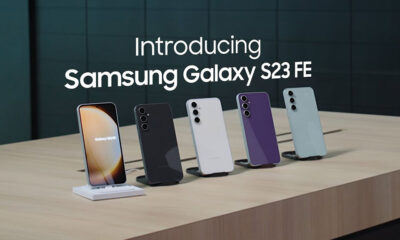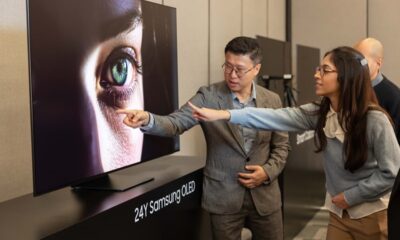Opinion
Should Samsung consider revamping its One UI update approach?

When keeping our Samsung Galaxy devices fresh with the latest software, there’s always an atmosphere of excitement and a hint of frustration. As Samsung officially confirmed the One UI 7.0 beta delays, Samsung’s update policy might need a rethink. Let’s dive into what’s happening and how Samsung could potentially polish its update game.
If you’re polishing your Galaxy S24 and waiting for the One UI 7.0 beta, you’re not alone. As per several reports in the past, the beta has been in internal testing since mid-year but still isn’t ready for public testing. This delay isn’t just a minor inconvenience; it’s a signal that perhaps the approach to software rollouts needs tweaking.
Samsung’s strategy has often been to prioritize newer Galaxy devices for the latest software updates, which is understandable from a marketing perspective. In the recent rollout, Samsung rolled out the One UI 6.1.1, the latest stable One UI version, to the Galaxy S24 series, which took an additional 15 days to reach the Galaxy S23 series, the device launched back in 2023, the same update took more than a month to appear for the Galaxy S22 series, launched in 2022.
This irregular rollout often leads to a terrible user experience. Imagine buying a high-end tablet only to find out that your friend or colleague’s newer Galaxy phone has the latest features first.
We can understand the above statements but here’s where things get too much. Even after prolonged beta testing periods, major bugs appear in the final stable releases. For example, after the 9 different One UI 6.0 beta builds released for the Galaxy S23 series last year, the stable update brought some serious bugs to the S23 trio.
This scenario begs the question: if beta testing isn’t catching these issues, what is going wrong? Users expect a seamless transition when they update their devices, not a troubleshooting session.
Here are my suggestions for Samsung’s Update Strategy:
1. Transparency: Samsung could benefit from setting clear, realistic timelines for updates and sticking to them. If there’s a delay, communicate it early. Transparency builds trust.
2. Update For All: Instead of staggered updates, why not aim for a more simultaneous release across eligible devices? This would help users with slightly older models feel their devices are still up-to-date.
3. Extended Beta Program: While beta testing is great, expanding this phase to include more real-world scenarios might help in catching serious bugs. More diverse testing environments could lead to more robust software. In the last 6 years, Samsung has kept the beta program limited to 7 countries only.
4. Post-Update Support: After rolling out major updates, there should be an immediate follow-up plan for quick patches. A dedicated update support team could swiftly address unexpected or serious issues.
5. Longevity Promises: Samsung’s recent move towards promising longer support for devices is commendable, with up to 7 years of software support latest Galaxy devices. However, these updates need to be timely and not just an afterthought.
6. Feature availability: When new features are introduced, Samsung could work on exporting some useful features to older but still eligible devices. This not only keeps the older devices relevant but also shows goodwill towards customers who aren’t upgrading every year.
My Opinion:
Samsung’s One UI software has transformed the Android experience for Galaxy users, making smartphones not just tools but companions in daily life. However, with great innovation comes the responsibility of maintenance. As we look towards One UI 7.0 and beyond, perhaps it’s time for Samsung to adopt a more user-centric update policy. By doing this, Samsung keeps the happiness of new updates alive, without the annoyance of waiting too long or dealing with errors after receiving them. In the quick-moving tech world, staying updated means not just getting new stuff, but also having a smooth and fun time using your device, no matter which model you have.
Opinion
Chipset heat concerns: Why I am worried about the Galaxy S25 Ultra

I love Samsung phones and always look forward to its new models. The Galaxy S25 Ultra was something I was really looking forward to. However, recent developments have introduced a significant amount of caution into my usual enthusiasm for Samsung’s flagship devices.
The Snapdragon 8 Elite, Qualcomm’s latest chipset for smartphones, was expected to set new benchmarks in smartphone performance. Based on early reports, the smartphones running the latest chipset are getting hot. When phones get too hot, they slow down to cool off, which means they don’t work as well as they should. This could be a big problem for the Galaxy S25 Ultra.
This isn’t the first time chips have caused such overheating issues. Remember the Snapdragon 8 Gen 1? It had the same thermal problem, but they made it better later on. This makes me hope they’ll fix the new chip too.
Google’s Tensor chips have also encountered overheating issues. They’re trying to make them better with the next version (G6), focusing on not making them too hot. This approach might be something Samsung considers if the Snapdragon 8 Elite’s heat issues persist.
Samsung usually does a lot of testing to make sure its phones work well. But since they use Qualcomm’s chips for the top models, the company might have to deal with this heat issue too. I’m worried about how this will affect using the phone every day.
There’s always a chance they can fix some of this with software updates. Qualcomm says they’re working on it, but this might just be a quick fix, not a real solution. The effectiveness of these updates will be crucial in determining my decision to upgrade.
The recent chipset issues with both Google’s Tensor and Qualcomm’s Snapdragon series have made me more aware of the potential pitfalls in adopting the latest technology without some proven reliability.
I still want the Galaxy S25 Ultra, but now I’m a bit worried. I hope Samsung can make it work without getting too hot.

Samsung Galaxy S25 Ultra (Source – Sammyfans)
Disclaimer:
It’s worth noting that all discussions here are based on rumors, leaks, and my own expectations as a tech consumer. There’s no official word yet on the Galaxy S25 Ultra’s chipset or its performance. The final product might well address these concerns, but for now, the excitement comes with a side of skepticism.
Opinion
Is Samsung One UI 7.0 coming next month?

As we near the end of 2024, people who love Samsung Galaxy phones are really looking forward to the new software update called One UI 7.0. The latest version of One UI is built on the newest Android 15 and will have lots of new stuff. But the question on everyone’s mind is: will we see the beta version in November 2024?
There’s been a lot of excitement building up about One UI 7.0 because of numerous leaks, most notably from Android Headlines, which recently shared what appears to be promotional material for One UI 7.0. This leak showcased new icon designs, lock screen customizations, and a revamped notification bar, making Samsung fans and tech lovers excited.
Well-known tech influencers like @SamsonSirJi on X have hinted at a November rollout for the One UI 7.0 beta. The Galaxy users on the internet are also talking about it more because leaks are happening more often, including a notable hands-on video by a random YouTuber who got early access to the beta on the Galaxy S24 Ultra, which suggests that Samsung might be close to opening up the beta program to the public.

Why November 2024?
Historically, Samsung has used beta programs to refine its One UI updates before the official stable release. If we look at previous years, Samsung typically begins its beta phase a few months before the next flagship Galaxy S series launch, which introduces the stable version of the new One UI.
The recent surge in leaks points towards Samsung’s readiness to enter the beta phase. Companies often allow leaks to build hype just before a release.
After SDC, Samsung usually accelerates the rollout of new software updates, which could mean we’re on the cusp of a beta release. The stable Android 15 is already live for Google Pixel devices, though several others have already started the Android 15 beta program.
Given that Samsung has officially confirmed the stable One UI 7.0 will accompany the Galaxy S25 series early next year, starting the beta in November 2024 would give sufficient time for testing and feedback.
Based on the pattern of Samsung’s beta programs, the timing of SDC Korea 2024, and the strategic release of promotional material, there is a strong case to be made that Samsung might indeed start the One UI 7.0 beta in November 2024.
Disclaimer
It’s important to note that while there are strong indications of a November beta release for One UI 7.0, Samsung has not officially confirmed any specific date for the beta program. The company has only shared an estimated timeline pointing towards the end of 2024.
Opinion
Here’s why I am waiting for Samsung Galaxy S25 Ultra

Just like every year, Samsung is set to unveil its trio of flagship smartphones at the beginning of next year: the Samsung Galaxy S25, S25+, and S25 Ultra.
Out of the new smartphones coming out, I really want the biggest and best one, the Galaxy S25 Ultra. Let me tell you why I’m so excited about it.
Disclaimer
Before we dive in, let’s clarify that the device has not yet been released, and the company has not officially confirmed its specifications or the name. The information I used in this article is based on previous release plans, as well as leaks and rumors from reliable sources.
Here’s why I am waiting for the Samsung Galaxy S25 Ultra:
1. Design and Display:
The Galaxy S25 Ultra is rumored to be the thinnest Ultra device yet, with a significant reduction in thickness compared to previous models. The device is expected to feature more rounded corners, which not only could look more modern but might also feel better in your hand.
It’s expected to have a screen size slightly larger than its predecessor, a 6.9-inch flat display. The use of ultra-thin symmetrical bezels would maximize the screen-to-body ratio, enhancing the viewing experience.
Disappointingly, Samsung has opted for M13-generation OLED materials for the Galaxy S25 Ultra’s display, instead of the more advanced M14 technology, as confirmed by DSCC CEO Ross Young through discussions with Samsung’s suppliers. Despite Samsung Display producing M14 OLED panels for products like the iPhone 16 Pro and Pro Max, the Samsung MX division will not utilize this technology in the S25 Ultra, prioritizing cost reduction.
2. Camera Upgrades:
The S25 Ultra is likely to feature an advanced AI camera system, possibly including a high-resolution sensor like a 200MP camera. An upgrade in the ultra-wide camera to 50MP with new specifications could significantly improve low-light performance and detail capture. There will be 50MP telephoto cameras for the 5x and 3x optical zoom.
The front-facing camera is expected to remain at 12MP, consistent with previous models, focusing on quality rather than a resolution increase.

3. Performance and Battery Life:
The flagship is expected to be powered by the Snapdragon 8 Gen 4 chipset, the phone would likely offer top-tier performance, possibly with efficiency gains due to the 3nm process technology, leading to better battery life and thermal management.
Although exact capacities weren’t mentioned, the combination of a new, more efficient processor and potentially a larger battery could mean exceptional battery life. It is expected to add a 5000mAh battery similar to the S24 Ultra.
4. One UI 7:
The new iteration of Samsung’s custom software, One UI, might include more refined Galaxy AI features for an enhanced user experience. As confirmed officially, the next version of One UI will bring major design changes and new features. The OS will be more smooth than ever before.
Getting the Galaxy S25 Ultra means you’ll enjoy the latest Android and One UI updates for years, thanks to Samsung’s pledge of up to 7 major OS updates.

Considering the Galaxy S25 Ultra might be worth it if you’re after Samsung’s top-tier design, camera advancements, performance enhancements, and battery efficiency. Keep in mind, though, that these insights stem from leaks and rumors, and the final product could have different specs.












